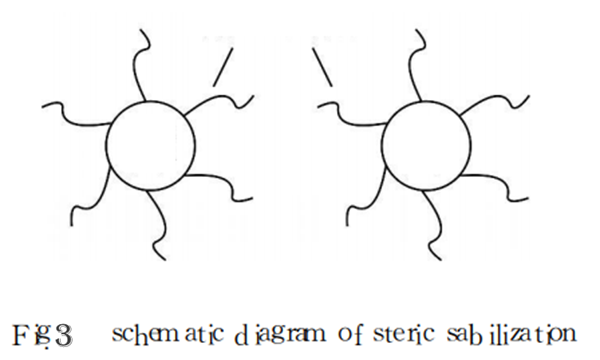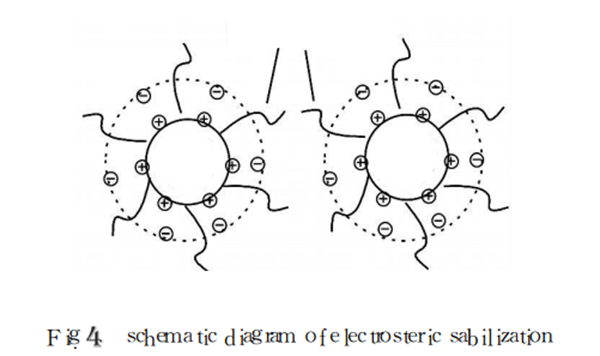- Home
- Products
- Elementary
- Boride Powder
- 3D Printing Powder
- Sulfide Powder
- Oxide Powder
- Carbide powder
- Nitride Powder
- Silicide Powder
- Hydride Powder
- Telluride Powder
- Selenide Powder
- Stearic Acid Series
- Phosphide Powder
- Nanoparticles
- Metal Alloy
- MAX Phase
- Lithium Battery Anode
- Surfactant
- Molecular sieves
- Concrete Admixtures
- News
- Answers
- Contact
- About
News
- 0
- 0
How to improve nanoparticles to make them more superior nanomaterials
If you are looking for high-quality products, please feel free to contact us and send an inquiry, email: brad@ihpa.net
Jumble of nanoparticles
The pile of nanoparticles can be split into 2 kinds: soft agglomeration as well as hard agglomeration. Soft load is generally caused by the electrostatic force in between fragments and also van der Waals pressure. Due to the weak pressure, soft agglomeration can pass some chemical techniques.
The legislation or the application of mechanical power to get rid of; the formation of hard agglomeration along with electrostatic pressures and also van der Waals forces, there are chemical bonds, so hard agglomerates are not easy to damage, require to take some special techniques to regulate.
 < img src="// ueeshop.ly200-cdn. com/u _ file/UPAI/UPAI779
/ 1907/photo/1661a376e4. png"/ > Schematic layout of load of nanoparticles Dispersion of nanoparticles Among the methods to stop the formation of high-density, hard-block precipitates of nanoparticles is to decrease van der Waals attraction or communication between teams, so that the main fragments are not quickly agglomerated to develop second particles, thus staying clear of more inter-atomic bonding. This leads to the development of high-density, hard-blocked precipitates. The anti-agglomeration system of nanoparticles is divided into: (1) electrostatic stablizing (DLVO concept); (2) steric stablizing; (3) electrostatic steric stabilization.
Nanoparticle diffusion theory Electrostatic stablizing device (DLVO concept)
The electrostatic stablizing device, also called the electrical dual layer stabilization device, creates an electrical double layer by adjusting the pH value to produce a certain amount of surface area cost externally of the bit. The attraction between the fragments is considerably minimized by the undesirable pressure between the electrical dual layers, consequently realizing the dispersion of the nanoparticles. The system is revealed as received Figure 2.
< img src="// ueeshop.ly200-cdn. com/u _ file/UPAI/UPAI779
/ 1907/photo/1661a376e4. png"/ > Schematic layout of load of nanoparticles Dispersion of nanoparticles Among the methods to stop the formation of high-density, hard-block precipitates of nanoparticles is to decrease van der Waals attraction or communication between teams, so that the main fragments are not quickly agglomerated to develop second particles, thus staying clear of more inter-atomic bonding. This leads to the development of high-density, hard-blocked precipitates. The anti-agglomeration system of nanoparticles is divided into: (1) electrostatic stablizing (DLVO concept); (2) steric stablizing; (3) electrostatic steric stabilization.
Nanoparticle diffusion theory Electrostatic stablizing device (DLVO concept)
The electrostatic stablizing device, also called the electrical dual layer stabilization device, creates an electrical double layer by adjusting the pH value to produce a certain amount of surface area cost externally of the bit. The attraction between the fragments is considerably minimized by the undesirable pressure between the electrical dual layers, consequently realizing the dispersion of the nanoparticles. The system is revealed as received Figure 2.

- < img src="// ueeshop.ly200-cdn. com/u _ file/UPAI/UPAI779/ 1907/photo/38c1a5ba33. png"/ > Stochastic stabilization mechanism The steric stablizing system is to add a certain quantity of uncharged polymer substance to the suspension to adsorb it around the nanoparticles to form a microcell state, which creates repulsion between the particles, consequently attaining the purpose of diffusion. The system diagram is received Number 4.
- Electrostatic steric stablizing mechanism
The pH value of the polyelectrolyte makes the most of the dissociation level of the polyelectrolyte, to ensure that the polyelectrolyte externally of the particle reaches the saturated adsorption, and also the 2 with each other function to consistently distribute the nanoparticles. The device diagram is received Number 3.
 < img src="// ueeshop.ly200-cdn.
com/u _ file/UPAI/UPAI779/ 1907/photo/ed7d9c96f4. png"/ > Nanoparticle dispersion method The dispersion of nanoparticles in the tool is generally divided right into 3 phases: 1 fluid moistening the solid bits; 2 dispersing the larger accumulations into smaller fragments by exterior pressure; 3 stabilizing the spread bits, ensuring that the powder fragments are in the fluid The stage remains uniformly spread for an extended period of time to avoid the distributed bits from re-aggregating. According to different diffusion devices, it can be divided right into mechanical action technique and also surface modification approach.
< img src="// ueeshop.ly200-cdn.
com/u _ file/UPAI/UPAI779/ 1907/photo/ed7d9c96f4. png"/ > Nanoparticle dispersion method The dispersion of nanoparticles in the tool is generally divided right into 3 phases: 1 fluid moistening the solid bits; 2 dispersing the larger accumulations into smaller fragments by exterior pressure; 3 stabilizing the spread bits, ensuring that the powder fragments are in the fluid The stage remains uniformly spread for an extended period of time to avoid the distributed bits from re-aggregating. According to different diffusion devices, it can be divided right into mechanical action technique and also surface modification approach.
- Mechanical activity
- Surface area modification
- Surface area modification of nanoparticles by not natural compounds
- Surface modification of nanoparticles by organic issue
 < img src ="// ueeshop.ly200-cdn.
com/u _ file/UPAI/UPAI779/ 1907/photo/c845513ec8. png"/ > conclusion The surface alteration technology of nanoparticles is an edge discipline closely relevant to lots of other techniques, including colloidal chemistry, organic chemistry, crystallography, nanomaterials, contemporary instrument analysis and also screening. The surface area layer adjustment technology has actually been extensively used in the surface area modification of nanometers, and also the research study leads to this location additionally reveal that the surface finish modern technology has a good growth possibility. However, the adjustment device, alteration method as well as devices, and the adjustment result characterization are still not perfect. Lot of times, the trouble can not be solved basically, as well as more research is urgently required. Due to the substantial changes in the physical and chemical properties of the surface-treated fragments, the growth of nano surface modification modern technology is taken into consideration an essential methods of generating new materials in the future. With the continual research study as well as understanding of nano-particles, as well as even more expedition of the surface adjustment of nano-powders, nano-technology will certainly exert potential power in various fields as well as will generate a great culture. Benefits and financial advantages.
< img src ="// ueeshop.ly200-cdn.
com/u _ file/UPAI/UPAI779/ 1907/photo/c845513ec8. png"/ > conclusion The surface alteration technology of nanoparticles is an edge discipline closely relevant to lots of other techniques, including colloidal chemistry, organic chemistry, crystallography, nanomaterials, contemporary instrument analysis and also screening. The surface area layer adjustment technology has actually been extensively used in the surface area modification of nanometers, and also the research study leads to this location additionally reveal that the surface finish modern technology has a good growth possibility. However, the adjustment device, alteration method as well as devices, and the adjustment result characterization are still not perfect. Lot of times, the trouble can not be solved basically, as well as more research is urgently required. Due to the substantial changes in the physical and chemical properties of the surface-treated fragments, the growth of nano surface modification modern technology is taken into consideration an essential methods of generating new materials in the future. With the continual research study as well as understanding of nano-particles, as well as even more expedition of the surface adjustment of nano-powders, nano-technology will certainly exert potential power in various fields as well as will generate a great culture. Benefits and financial advantages.
Luoyang Tech Co., Ltd is an expert Zinc Nanoparticles maker with over 12 years experience in chemical items r & d. If you are searching for high top quality Zinc Nanoparticles, please do not hesitate to contact us and also send out a questions.
Inquiry us
 < img src="// ueeshop.ly200-cdn.
com/u _ file/UPAI/UPAI779/ 1907/photo/ed7d9c96f4. png"/ > Nanoparticle dispersion method The dispersion of nanoparticles in the tool is generally divided right into 3 phases: 1 fluid moistening the solid bits; 2 dispersing the larger accumulations into smaller fragments by exterior pressure; 3 stabilizing the spread bits, ensuring that the powder fragments are in the fluid The stage remains uniformly spread for an extended period of time to avoid the distributed bits from re-aggregating. According to different diffusion devices, it can be divided right into mechanical action technique and also surface modification approach.
< img src="// ueeshop.ly200-cdn.
com/u _ file/UPAI/UPAI779/ 1907/photo/ed7d9c96f4. png"/ > Nanoparticle dispersion method The dispersion of nanoparticles in the tool is generally divided right into 3 phases: 1 fluid moistening the solid bits; 2 dispersing the larger accumulations into smaller fragments by exterior pressure; 3 stabilizing the spread bits, ensuring that the powder fragments are in the fluid The stage remains uniformly spread for an extended period of time to avoid the distributed bits from re-aggregating. According to different diffusion devices, it can be divided right into mechanical action technique and also surface modification approach.
 < img src ="// ueeshop.ly200-cdn.
com/u _ file/UPAI/UPAI779/ 1907/photo/c845513ec8. png"/ > conclusion The surface alteration technology of nanoparticles is an edge discipline closely relevant to lots of other techniques, including colloidal chemistry, organic chemistry, crystallography, nanomaterials, contemporary instrument analysis and also screening. The surface area layer adjustment technology has actually been extensively used in the surface area modification of nanometers, and also the research study leads to this location additionally reveal that the surface finish modern technology has a good growth possibility. However, the adjustment device, alteration method as well as devices, and the adjustment result characterization are still not perfect. Lot of times, the trouble can not be solved basically, as well as more research is urgently required. Due to the substantial changes in the physical and chemical properties of the surface-treated fragments, the growth of nano surface modification modern technology is taken into consideration an essential methods of generating new materials in the future. With the continual research study as well as understanding of nano-particles, as well as even more expedition of the surface adjustment of nano-powders, nano-technology will certainly exert potential power in various fields as well as will generate a great culture. Benefits and financial advantages.
< img src ="// ueeshop.ly200-cdn.
com/u _ file/UPAI/UPAI779/ 1907/photo/c845513ec8. png"/ > conclusion The surface alteration technology of nanoparticles is an edge discipline closely relevant to lots of other techniques, including colloidal chemistry, organic chemistry, crystallography, nanomaterials, contemporary instrument analysis and also screening. The surface area layer adjustment technology has actually been extensively used in the surface area modification of nanometers, and also the research study leads to this location additionally reveal that the surface finish modern technology has a good growth possibility. However, the adjustment device, alteration method as well as devices, and the adjustment result characterization are still not perfect. Lot of times, the trouble can not be solved basically, as well as more research is urgently required. Due to the substantial changes in the physical and chemical properties of the surface-treated fragments, the growth of nano surface modification modern technology is taken into consideration an essential methods of generating new materials in the future. With the continual research study as well as understanding of nano-particles, as well as even more expedition of the surface adjustment of nano-powders, nano-technology will certainly exert potential power in various fields as well as will generate a great culture. Benefits and financial advantages.